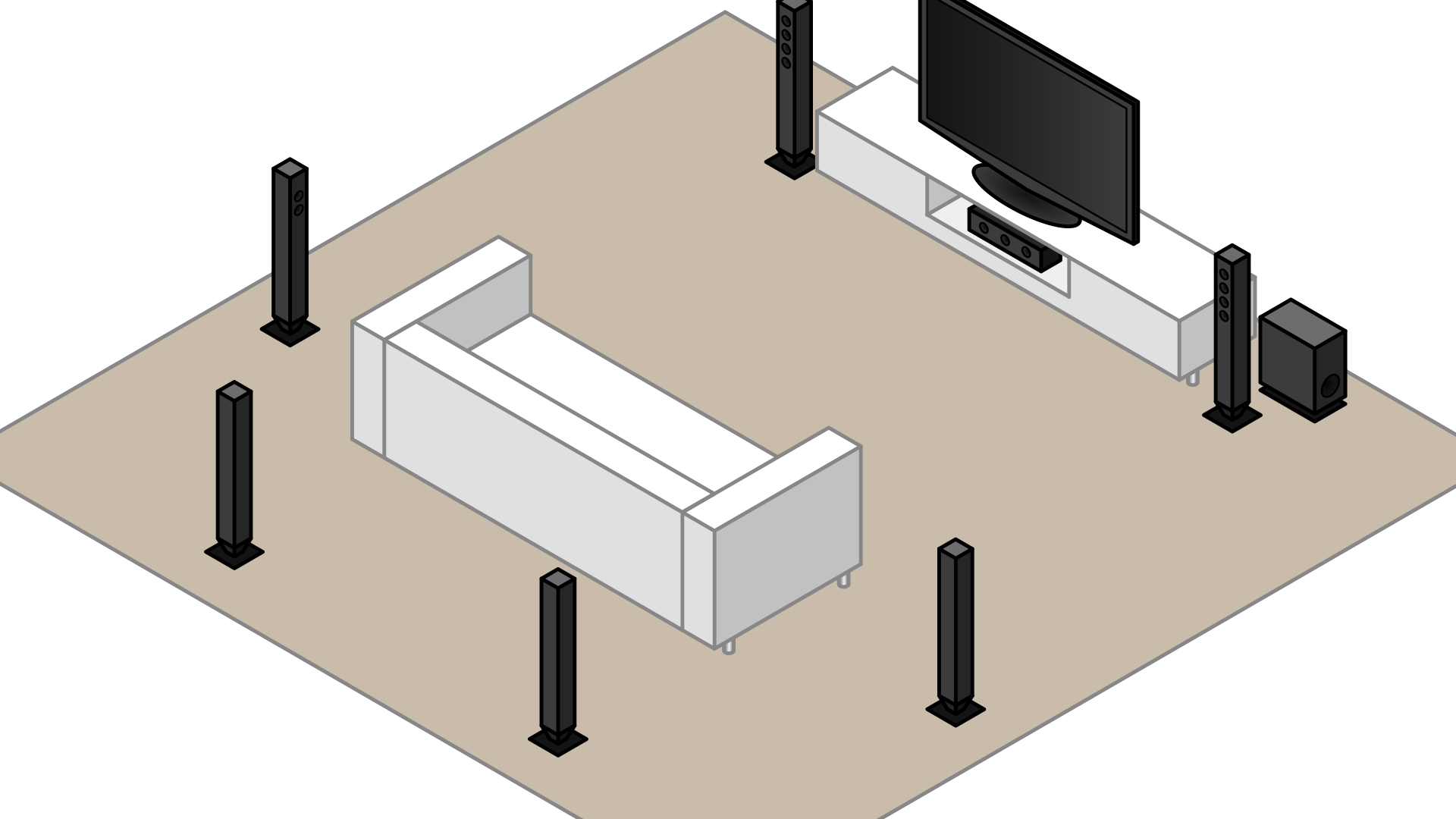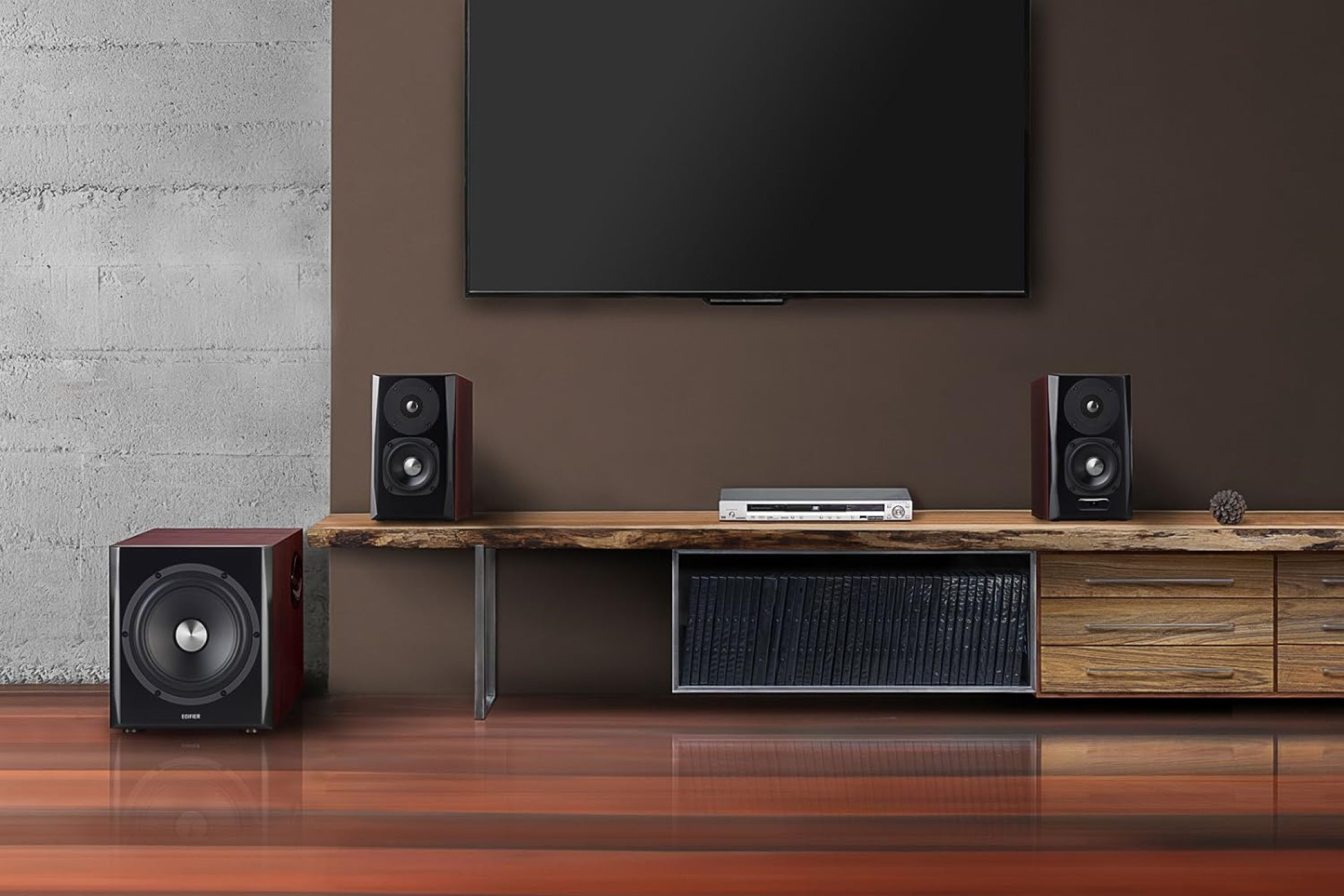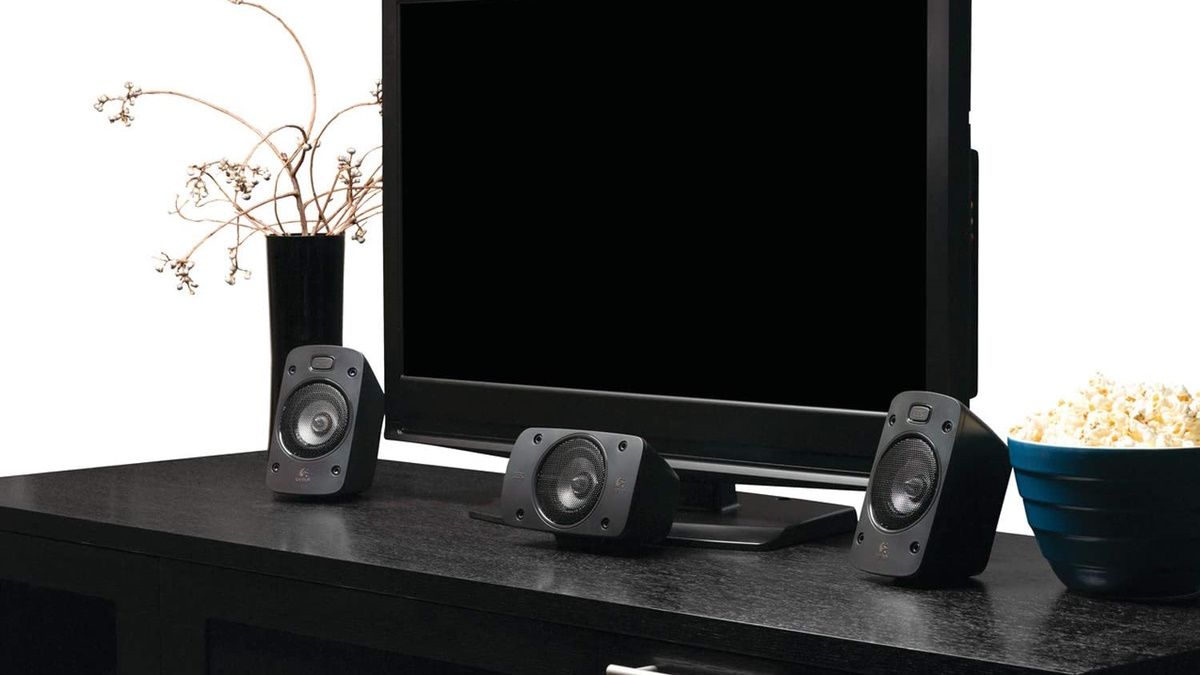Key Takeaways
- The numbers in sound system labels (2.1, 5.1, and 7.1) refer to the number of channels.
- A 2.1 system provides a budget-friendly yet substantial upgrade over a TV’s built-in speakers.
- 5.1 and 7.1 both provide immersive surround sound systems; 5.1 is great for most rooms, whereas 7.1 is ideal for large spaces.
Decided to upgrade your TV’s built-in speakers to a proper home theater setup? One of the most important decisions you’ll have to make is to choose between the 2.1, 5.1, or 7.1 sound systems. Let’s go over the types and what each can do for you.
What Do the Numbers Mean?
While sound system terminology might seem complicated at first glance, it’s actually fairly straightforward. The first number in the system’s label indicates the number of speaker channels, and the second one is the number of subwoofer channels (a large speaker that reproduces bass). For instance, a 5.1 sound system has five speakers and one subwoofer, whereas a 7.2 system has seven speakers and two subwoofers.
So, what’s the purpose of having multiple speakers? It’s to create a surround sound effect. The sound gets divided into different channels to make it sound like it’s coming from specific locations you see on the screen. You get a highly immersive experience in movies and games that places you in the middle of the action—similar to VR but for audio. The effect is achieved by strategically placing the speakers around your seating area rather than just in the front, which is why surround soundbars often fall short of the real deal.
As for the subwoofer, you’ll most commonly see systems with a single subwoofer. This is because low frequencies (bass) have long wavelengths, so a single subwoofer can fill the whole room if placed correctly. While there’s no theoretical limit to how many you can use, a second subwoofer already brings you into the area of diminishing returns.
You might also encounter sound systems with a third number, such as “5.1.4.” This number refers to the number of upwards-firing or ceiling-mounted speakers used in Dolby Atmos systems.
2.1 Sound System: Simple, Yet Good
2.1 is the most basic of the three systems. Instead of surround sound, this system offers a simple stereo setup with one speaker on the left, one on the right, and a subwoofer, which is ideally placed somewhere in the center or a corner. While it might not seem like much, a 2.1 system is still a massive upgrade over your TV’s built-in speakers or PC speakers that lack a subwoofer.
Modern TVs typically have downward-firing speakers that allow the speaker to look great at the cost of sound quality. With a 2.1 system, the speakers will face your seating area directly, allowing for clear audio that makes it easier to hear dialogue. You’ll still probably need to enable subtitles for Peaky Blinders, though.
A 2.1 system is ideal if you don’t have enough space for a home theater setup and want something better than a soundbar. This isn’t to say that soundbars aren’t great; it’s just that you have to spend a lot more money to get a decent model, more if you want a separate subwoofer. You can get a basic 2.1 system for as low as $60, such as the Logitech Z313.
Perhaps the best part about 2.1 is the straightforward setup. You don’t have to figure out where to place the speakers; simply place them to the left and right of your TV or monitor. Some speakers are wall-mountable, though you’ll still have to place the subwoofer on the floor.
Perhaps the most noticeable upgrade associated with a 2.1 system is the dedicated subwoofer. It adds that deep, rumbling bass to explosions, action scenes, and music that you just can’t get with standard full-range speakers. While it can’t fully replicate the cinema experience, it’s still surprisingly great. I use a 2.1 system for gaming and music, and I can’t imagine how dull my life would be without that subwoofer under my desk.
5.1 Surround Sound: The Gold Standard
5.1 is a big step up from 2.1. It adds three extra channels: one in the center and two in the back, which creates a 360° surround sound effect around your seating area. Unlike 7.1 systems, 5.1 doesn’t require a large room to work well and is more affordable. Expect to pay around $300–$400 for a proper 5.1 system, such as the Klipsch Black Reference Theater Pack, or less if you opt for a soundbar setup with two satellite speakers and a subwoofer.
If you’re wondering what the center speaker is for, it provides clear dialogue while also allowing the front left and right speakers to be placed further apart. But the true magic happens with the two rear speakers placed behind and to the sides, which allow sound to travel around you in a complete circle for an immersive, exciting sound experience in games and movies.
Note that audio needs to be properly encoded for surround sound. Fortunately, this is readily available for 5.1, as most Blu-rays and DVDs are properly encoded to support it, largely thanks to the widespread use of Dolby Digital. Even streaming services like Netflix support 5.1 surround sound with limited or no support for 7.1. Additionally, most video games are compatible with 5.1. If you don’t mind the upfront cost and setup time, you’ll love having a 5.1 system.
7.1 Surround Sound: Great for Large Rooms
7.1 surround builds on top of the 5.1 system by adding two side channels placed between the front and rear stages. These two speakers enhance the surround sound experience by adding more depth and detail, essentially filling the gap between the front and rear channels.
The extra speakers are typically floor-standing units placed parallel to the seating area, though they can also be positioned further back. Some people place the two extra speakers parallel to the seating area, while others move the existing rear channels further back and then add the two new speakers somewhere behind the seating area.
A true 7.1 surround sound system is expensive and more difficult to set up because it takes up a lot of space. For instance, this Fluance 7.1 Speaker System is usually over $800 on Amazon, and it comes with two enormous floor-standing towers. For this reason, you must have a large room with sufficient space for all the speakers and wiring.
You could opt for a system with a soundbar, like the Ultimea 7.1. However, if you look at the images of how they’re typically set up, you’ll quickly realize that these are essentially 5.1 systems in disguise. You really need seven separate speakers for the complete experience.
The real downside of 7.1 surround sound systems is the limited content support. If true 7.1 isn’t available in the data, your AV receiver can use an upmixing algorithm to convert 5.1 audio to 7.1. The existing audio signal is then distributed across all speakers to take advantage of the expanded sound stage.
Which System is Right for You?
If you love playing video games and watching TV shows and movies, you should go for a surround sound system. 5.1 is a great choice for most people, as it’s widely supported and strikes a balance between cost and space requirements. The front and rear channels can easily fill most rooms with sound. A 7.1 system is best suited for large rooms where you can fully benefit from the two extra channels.
If you don’t have the space for a surround sound setup, a 2.1 system is a budget-friendly upgrade to your audio system. It’s miles better than your TV’s built-in speakers. Moreover, if you plan to use the speakers for music, you don’t even need a surround sound system.








